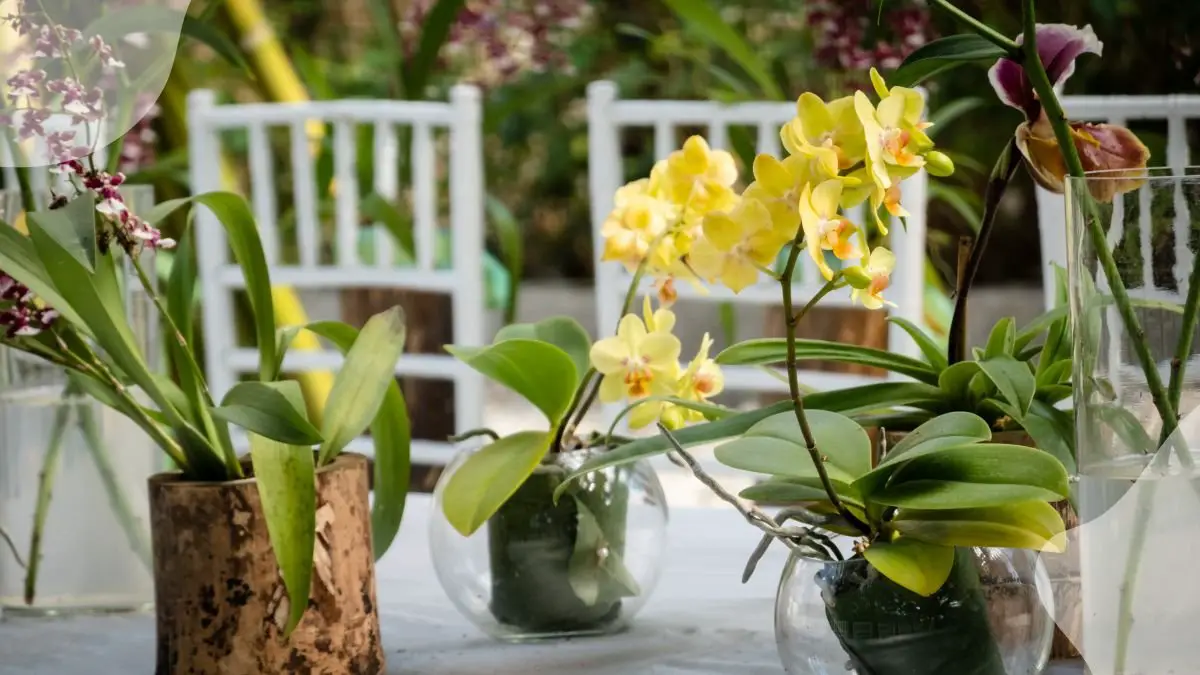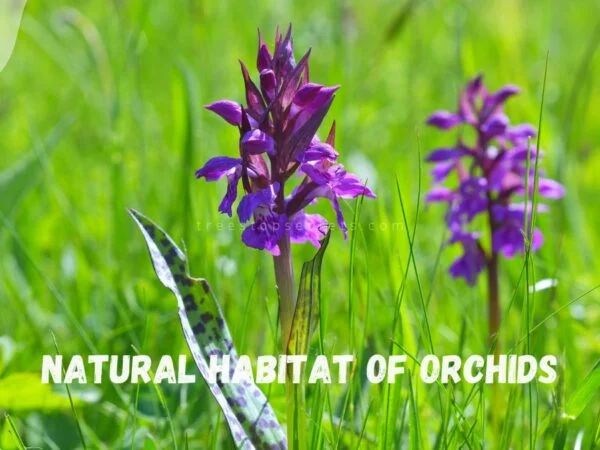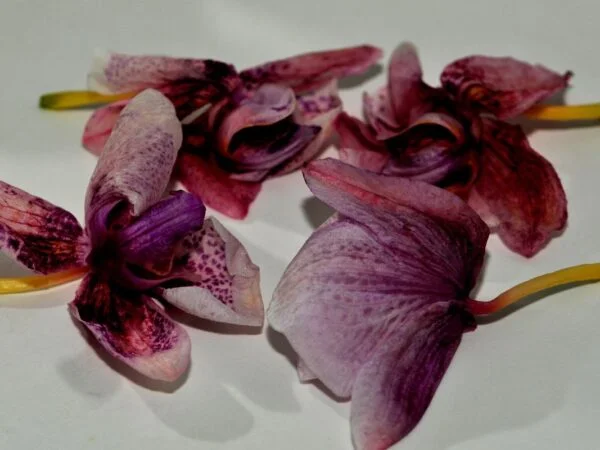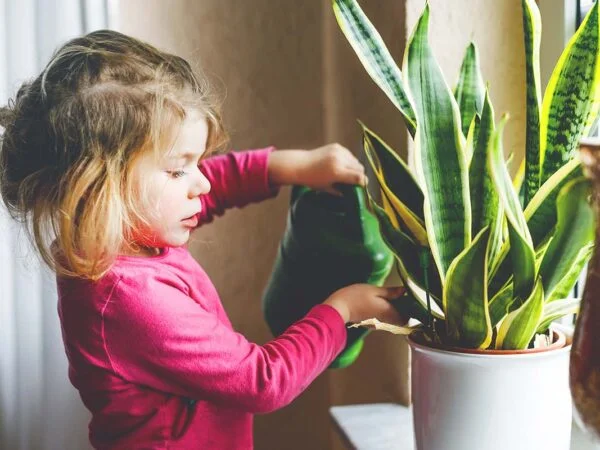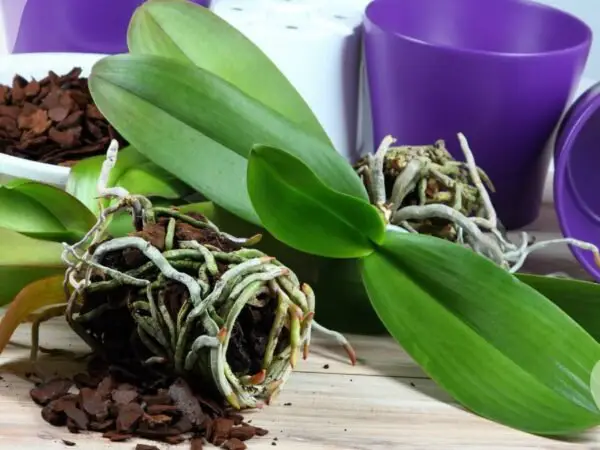Noticing yellowing leaves on your orchid can be concerning, but fear not – we've got you covered! While vibrant green foliage signifies a healthy plant, premature yellowing of orchid leaves often signal underlying issues that need attention. By understanding the causes behind this discoloration, you can take proactive steps to revive your orchid and restore its beauty. From improper watering practices to nutrient deficiencies or even pests, various factors could be causing this change in leaf color. In this guide, we'll delve into the common reasons for yellowing leaves on orchids and provide you with practical solutions to help your plant thrive once more.
Key Takeaways
- Properly understanding orchid leaves is essential for identifying and addressing issues like yellowing.
- Yellowing leaves on orchids can be caused by various factors such as overwatering, inadequate light, incorrect temperature, or nutritional deficiencies.
- To prevent yellowing leaves, ensure you water your orchid correctly by allowing the roots to partially dry out between waterings.
- Orchids require adequate light but should be protected from direct sunlight to avoid leaf damage.
- Maintaining the right temperature range is crucial for orchids to thrive and prevent leaf discoloration.
- Providing proper nutrition through balanced fertilization is key to keeping orchid leaves healthy and vibrant.
Understanding Orchid Leaves
Signs of Health
When checking orchid leaves, look for yellowing as it may signal underlying problems. Healthy leaves are vibrant and green, indicating a thriving plant. Assess the roots - healthy ones are plump and green, supporting leaf health.
Signs of Stress
Wrinkled orchid leaves can indicate stress caused by various factors. Yellow discoloration or spots on leaves suggest water environmental stressors affecting the plant. Changes in texture or firmness of leaves may indicate stress in the orchid.
Common Questions
Understand why orchid leaves wrinkle to address potential issues effectively. Proper watering techniques are crucial to prevent leaf problems in orchids. Maintaining an ideal temperature range is essential for orchids to thrive without leaf-related issues.
Causes of Yellowing Leaves
Watering Issues
Over-watering can lead to brown, mushy roots and wrinkled leaves, while under-watering shows as leathery leaves and dry, brittle roots. Proper watering techniques include bottom watering and maintaining a consistent schedule.
Light Exposure
Excessive direct sunlight can damage orchid leaves, causing discoloration. Moving orchids away from direct sunlight prevents leaf burn and further damage. Providing adequate but not excessive light is crucial for orchid health.
Temperature Impact
Maintain orchids within the preferred temperature range of 18-30 degrees Celsius to avoid leaf stress. Fluctuations outside this range can harm orchid leaves. Monitoring temperature changes is essential for orchid health.
Nutrient Deficiencies
Wrinkled orchid leaves may indicate a nutrient deficiency due to root damage or lack of nutrients. Nutrient deficiencies can impact the overall health and appearance of orchid leaves. Address deficiencies promptly to restore leaf health.
Watering Correctly
Identifying Needs
Assess the specific needs of your orchid plant by observing leaf color, texture, and overall appearance. Determine if your orchid requires adjustments in watering, light exposure, or nutrient levels based on leaf condition. Tailor care practices to meet the individual needs of your orchid plant for optimal leaf health.
Best Practices
Implement best practices for orchid care to maintain healthy leaves and overall plant well-being. Follow recommended guidelines for watering, light exposure, and temperature control to prevent leaf issues. Incorporate regular checks and adjustments to ensure your orchid thrives with vibrant leaves.
Light Requirements
Ideal Amount
To maintain healthy orchid leaves, determine the ideal amount of light needed for your plant. Strike a balance between under-watering and over-watering to prevent leaf issues. Adjust watering frequency based on your orchid's specific requirements for optimal leaf health.
- Over-watering can lead to root suffocation, while under-watering can cause dehydration in orchid leaves.
- Find the sweet spot by observing your orchid's response to watering and adjusting accordingly.
- Providing adequate light is crucial for photosynthesis and overall plant vitality.
Effects of Excess
Excessive sunlight can harm orchid leaves, causing discoloration and damage. Similarly, overwatering can lead to root suffocation, resulting in leaf wrinkling and poor plant health. Avoid overdoing care practices to prevent leaf problems.
- Excessive sunlight exposure can scorch orchid leaves, leading to yellowing and browning.
- Too much water can create a damp environment that encourages root rot and leaf issues.
- Monitor your orchid closely to identify early signs of stress due to excessive light or water.
Temperature for Orchids
Optimal Range
Maintain orchids within 18-30 degrees Celsius to promote healthy leaf growth and overall plant well-being. Consistent temperatures are crucial to prevent stress on orchid leaves. Monitoring temperature fluctuations is key to ensuring orchids thrive with vibrant leaves.
List:
- Keep orchids within 18-30 degrees Celsius
- Ensure consistent temperature levels
- Monitor temperature fluctuations
Avoiding Extremes
Avoid drastic temperature changes that can harm orchid leaves and affect the plant's health. Direct sunlight exposure should be limited to prevent leaf burn and damage. Be cautious with watering practices to maintain the delicate balance of orchid leaves.
- Avoid extreme temperature fluctuations
- Limit exposure to direct sunlight
- Be mindful of watering practices
Nutritional Care
Identifying Deficiencies
Nutrient deficiencies in orchids manifest through symptoms such as wrinkled leaves and poor overall plant health. These signs indicate a lack of essential nutrients vital for leaf development. Promptly addressing nutrient deficiencies is crucial to prevent further damage to orchid leaves. Adjusting fertilizer application or potting mix can effectively correct nutrient imbalances affecting leaf health.
- Pros:
- Early identification of deficiencies prevents extensive leaf damage.
- Timely correction promotes healthy leaf growth and overall plant vitality.
- Cons:
- Incorrect diagnosis of deficiencies may lead to ineffective treatment.
- Over-fertilization can harm orchids, causing leaf burn and root damage.
Feeding Your Orchid To ensure optimal leaf health, it's essential to provide your orchid with the necessary nutrients through appropriate fertilization. Understanding the specific nutrient requirements of orchids is key to preventing deficiencies that could compromise leaf quality. Following a feeding schedule tailored to your orchid's needs is vital for maintaining vibrant and healthy leaves.
- Feed your orchid with a balanced fertilizer containing essential nutrients like nitrogen, phosphorus, and potassium.
- Monitor your orchid's response to fertilization to adjust nutrient levels accordingly.
- Consider using specialized orchid fertilizers designed to meet the unique nutritional needs of these plants.
Additional Care Tips
Managing Humidity
Maintain optimal humidity levels for orchids to prevent leaf problems. Use humidity trays or misting to increase moisture around orchids. Monitor humidity regularly for a suitable environment.
Potting Stress
Recognize signs of stress related to potting issues such as root rot or overcrowding. Repot orchids when necessary to promote healthy leaf development. Choose appropriate potting mix and containers for optimal conditions.
Disease and Pests
Watch out for signs of diseases or pests that can affect orchid leaves. Take preventive measures against common orchid pests like aphids or spider mites. Treat diseases promptly with appropriate solutions.
Preventing Yellow Leaves
Routine Checks
Establish a routine to check orchid leaves, roots, and overall plant health regularly. Detect issues early to prevent yellowing. Regularly inspect orchids for signs of stress, nutrient deficiencies, or pest infestations impacting leaf quality. Incorporate maintenance tasks to maintain healthy, vibrant orchids free from leaf problems.
Adjustments and Fixes
Make necessary adjustments in watering, light exposure, or nutrient levels to address leaf issues promptly. Implement fixes for common problems like over-watering, under-watering, or nutrient deficiencies affecting orchid leaves. Monitor the effectiveness of adjustments and fixes to ensure improved leaf health and overall plant well-being.
Summary
You now have a comprehensive understanding of why orchid leaves turn yellow and how to properly care for your plant. By addressing watering, light exposure, temperature, nutrition, and following additional care tips, you can prevent yellowing leaves and ensure the health of your orchid. Remember to maintain a consistent care routine and monitor your plant regularly to catch any issues early on.
Take action today by implementing these strategies to keep your orchid thriving. Your attention to detail and proactive care will reward you with vibrant, healthy leaves and beautiful blooms. Stay committed to providing the best environment for your orchid, and you'll enjoy its beauty for years to come.
Frequently Asked Questions
What are the common causes of yellowing leaves on orchids?
Yellowing leaves on orchids can be due to overwatering, inadequate light exposure, incorrect temperature levels, nutrient deficiencies, or pests. Proper diagnosis is crucial for effective treatment.
How can I prevent yellow leaves on my orchid plant?
To prevent yellowing leaves on orchids, ensure proper watering practices, provide adequate light, maintain suitable temperature conditions, regularly fertilize with balanced nutrients, and inspect for pests. Creating a healthy environment is key to preventing leaf discoloration.
Is sunlight important for preventing yellow leaves on orchids?
Yes, sufficient sunlight is crucial for orchids to thrive and maintain healthy green leaves. Place your orchid in a location where it receives appropriate light levels according to its species. Adequate light exposure helps prevent yellowing and promotes overall plant health.
How often should I water my orchid to avoid yellowing leaves?
Water your orchid only when the top layer of the potting mix feels dry to the touch. Overwatering can lead to root rot and yellowing leaves. Establish a consistent watering schedule based on your orchid's specific needs to maintain optimal leaf health.
Can nutrient deficiencies cause yellow leaves on orchids?
Yes, nutrient deficiencies such as lack of nitrogen, iron, or magnesium can result in yellowing leaves on orchids. Regularly fertilizing your orchid with a balanced fertilizer helps prevent these deficiencies and ensures vibrant green foliage.
Image Source: Paid image from CANVA

